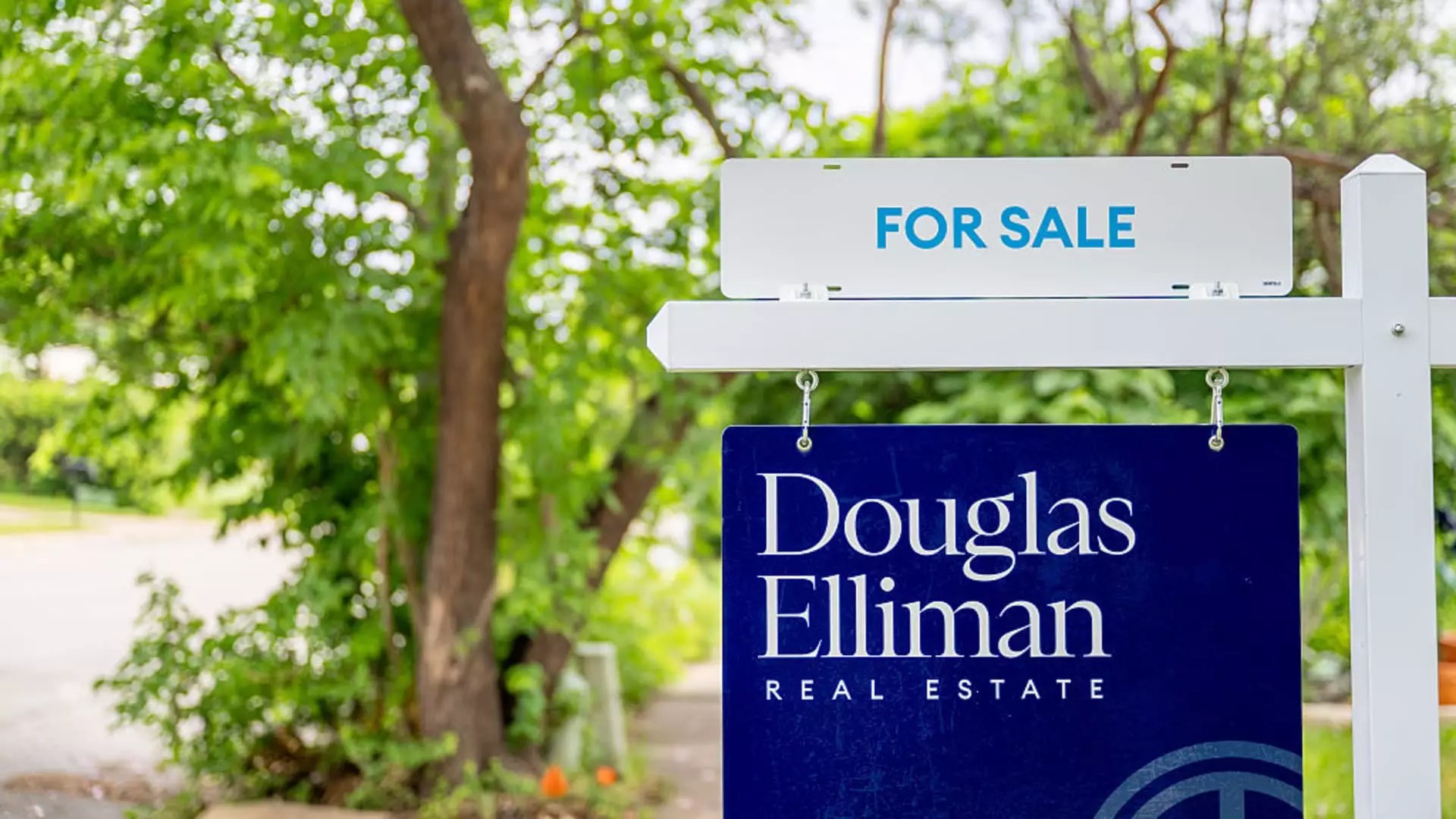Recent developments in mortgage interest rates reveal a perplexing dichotomy: while rates have edged down for the second consecutive week, the backdrop of economic uncertainty looms ever larger. The Mortgage Bankers Association’s latest figures show a notable 11% increase in mortgage applications, a seemingly optimistic development amid dismal economic indicators. At first glance, this surge may appear to be a beacon of hope, an indication that homebuyers remain undeterred in their pursuit of property ownership despite prevailing challenges in the economy. Yet, the reality is far more nuanced and deserving of scrutiny.
Interest rates for 30-year fixed mortgages have recently dipped from 6.89% to 6.84%. However, this drop is nearly inconsequential compared to the alarming inflation of 34 basis points from the same period last year. Michael Fratantoni, the chief economist at the MBA, explains this phenomenon well, pointing to a mixed economic narrative featuring stalled GDP growth and signs of a fading manufacturing sector. It’s troubling that the slight decline in mortgage rates coincides with such bearish economic data. This contradiction raises questions about the sustainability of the housing market and whether the recent surge in mortgage applications can continue against a backdrop of economic instability.
Who’s Really Buying? A Reflection on Consumer Behavior
Interestingly, a critical analysis shows that the increase in mortgage applications is largely driven by conventional loans, typically sought by larger, more financially stable move-up buyers. This demographic tends to have a higher tolerance for risk, which may explain their readiness to act even as economic clouds gather. However, it raises a pivotal question: Are these buyers placing their faith in a volatile market without due diligence? As many first-time homebuyers hesitate, fearful of the unpredictable nature of both economic and stock markets, the buyers of conventional loans appear to be operating on a different wavelength, one that could ultimately backfire.
Real estate professionals are reporting strong demand, but fewer people are willing to put pen to paper, indicating a cautious climate despite apparent demand. This hesitation could be attributed to broader economic fears, such as price inflation and rising tariffs, which have spooked consumers into a more conservative financial approach. The result? A market where interest rates may not align with consumer confidence and buying capacity.
The Role of Federal Interest Rates: A Precarious Balance
The upcoming Federal Reserve meeting is another critical factor that could alter the mortgage landscape in unexpected ways. Although the Fed is not anticipated to cut interest rates, the unpredictable nature of the Fed’s communications can send shockwaves through the financial markets, greatly impacting mortgage rates. The reaction of homebuyers to these unpredictable shifts reveals the precarious balance between consumer confidence and Federal policies.
While a rational person might suggest that consumers should remain as cautious with their financial commitments as ever, the allure of low mortgage rates amidst falling prices can create an irresistible temptation. The potential for inflated subscription rates could lead to a housing market that is fragile, one that could collapse under the weight of further economic shocks. In this context, the 11% surge in mortgage demand didn’t just materialize out of a vacuum; it’s a reflection of consumers navigating a labyrinth of uncertainty, reminiscent of a tightrope walker balancing precariously over a chasm.


Leave a Reply